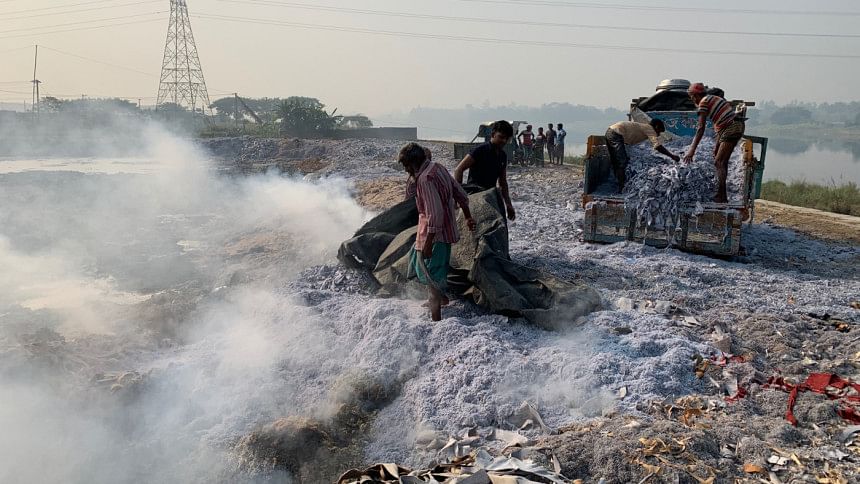Air pollution: Tanneries burning leather wastes at Dhaleshwari
For last two years the authorities of Tannery Industrial Estate were polluting the Dhaleshwari river dumping liquid waste as their effluent treatment plant is not ready yet, now they are also polluting air by burning leather wastes in the bank of the Dhaleshwari.
Though the government decided in an inter-ministerial meeting on November 25 not to burn wastes as it worsen the air quality, the authorities of tannery estate asked it's workers to burn the small pieces of wastes leather and leather dust and s as their dumping ground is already filled up.

Visiting the tannery estate last Saturday, workers from different tanneries were seen bringing truckloads of wastes leathers and leather dust into the dumping ground and setting fire that causing huge toxic smokes.
The whole area was covered with white smokes and heavy with the foul smell burnt skins.
One of the workers who claimed that he was deployed by the authorities of Bangladesh Small and Cottage Industries Corporation (BSCIC), the government agency implementing the tannery project, was supervising the work.

"My job here is to supervise the work whether they dump it properly," said Nur Islam who claimed he was deployed by an official working with the BSCIC project office.
Nur Islam said, they have been burning 20 to 30 trucks of wastes leather every morning. They have been burning the wastes for last three months.
He said, they were burning the waste as the ditch at the tannery estate where they were dumping the solid waste is already filled up.
However, Jitendra Nath Paujl, the director of the Savar Tannery Industrial Estate project, said dumping solid wastes there is a temporary arrangement as they could not finish the work of the solid waste processing shed yet.
"Actually workers from different factories dump their wastes there and set fire on it. We have directed our people to put out the flames if somebody sets fire," he said.
Regarding the solid waste management, he said, already a tender has been floated to construct the shed for solid waste management.
"Almost forty percent of the total solid waste generated there is not toxic and that will be used for making gelatin while the toxic wastes will be used for paper board," he said.
BSCIC already allocated land to a company that will be making gelatin and board.
Local people are already suffering due to pollution of the tannery waste.
"They have been polluting the river since they arrive here. Now they are polluting the air," said Suman Mia, a local villager.

 For all latest news, follow The Daily Star's Google News channel.
For all latest news, follow The Daily Star's Google News channel. 








Comments